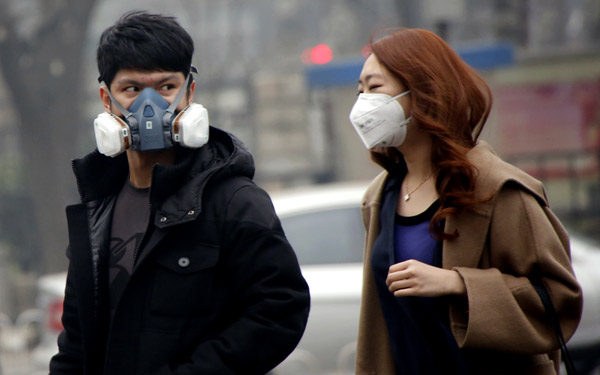 |
|
A couple tackle the pollution in a shopping district amid heavy smog after the capital issued its first ever "red alert" for air pollution on Dec 8, 2015. [Photo/Agencies] |
Chai Fahe, deputy head of the China Research Academy of Environmental Sciences, said the areas not only suffer from worse air pollution than their neighbors, but also have longer lasting smog.
The hot spots are located in the cluster's northern and central areas, covering some parts of Beijing as well as Baoding, Shijiazhuang, Hengshui, Langfang and Cangzhou in Hebei province, which have consistently been among the worst of China's 74 major domestic cities for smog since 2013.
Speaking at seminar on air pollution that was attended by senior officials from the Environmental Protection Ministry on Wednesday, Chai said the hot spots needed "extra strict" regulations to reduce pollutant emissions and help alleviate regional smog issues.
Chen Jining, the minister of environmental protection, has previously highlighted the importance of tackling air pollution in the core cities of Beijing, Tianjin, Baoding, Cangzhou, Langfang and Tangshan, through regional control efforts that include adopting unified standards on issuing smog alerts.
Since November, the Beijing-Tianjin-Hebei cluster has been hit by three bad spells of smog.
In December, the average concentration of PM2.5-particulate matter with a diameter less than 2.5 microns that is hazardous to health-climbed to 143 micrograms per cubic meter, the highest monthly reading since February 2014, according to the China National Environmental Monitoring Center.
In response, the region's governments have pushed forward with adopting air quality forecast technologies, to make smog alerts more scientific.
A pilot project to adopt unified standards for issuing alerts that was begun by the six core cities will end on March 15, the end of the municipal heating season.
However, more cities in the region are expected to follow suit in adopting unified standards next season, which starts on Nov 15.
